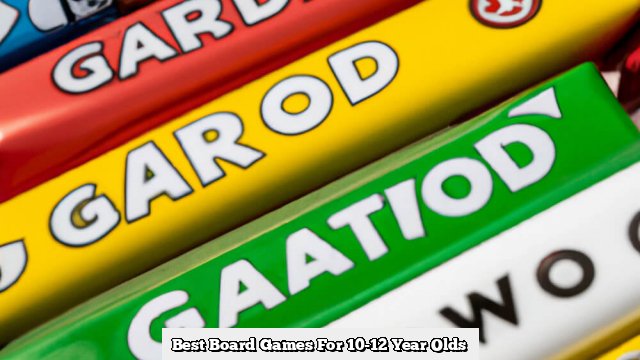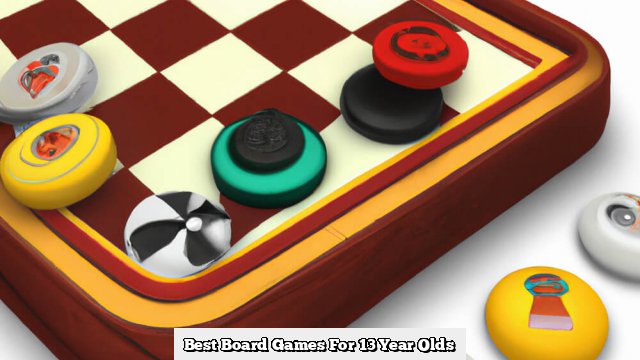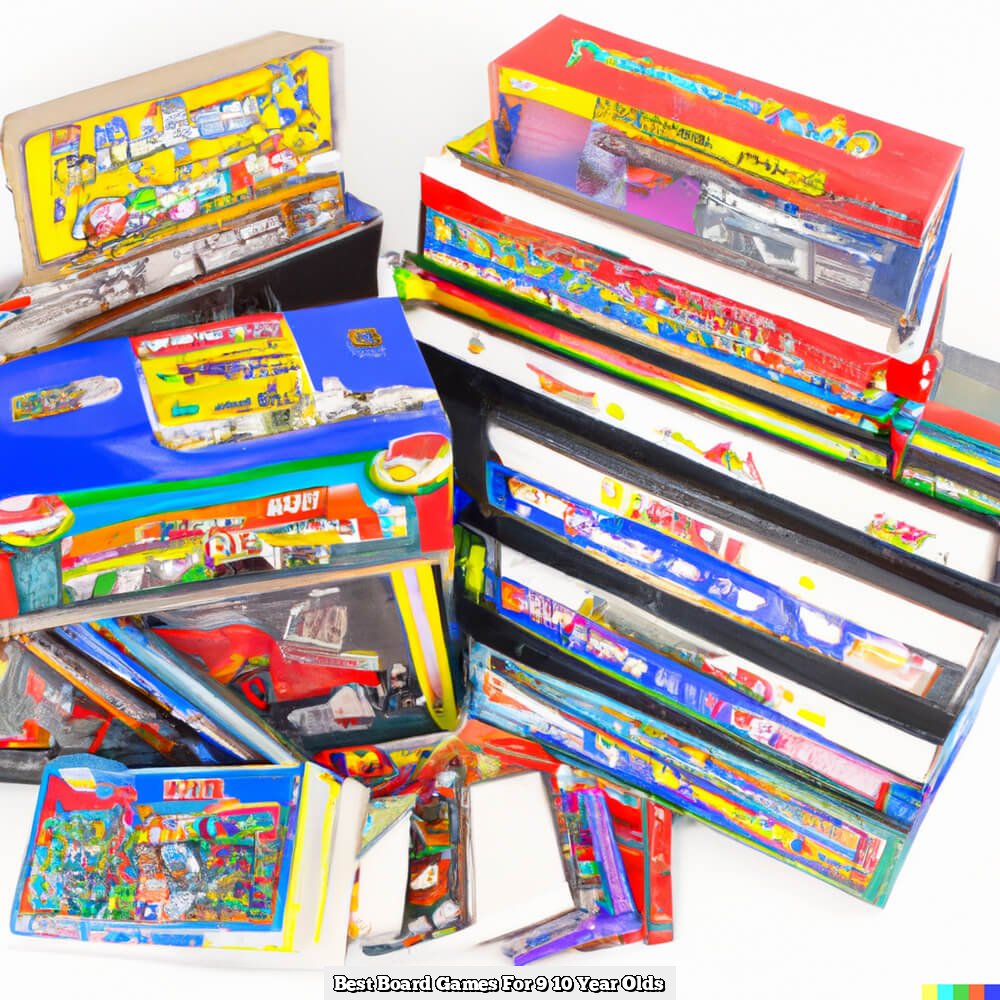Introduction
Board games have been an integral part of childhood for many generations. Nowadays, they are just as important for stimulating the minds of young children and teaching them various skills. Games help little ones develop important fine motor capabilities and hand-eye coordination, as well as their memory, problem-solving ability, critical thinking and numeracy skills. Through playing board games with their parents or other kids, children can also learn about teamwork and how to take turns in a playful way.
For 3 to 5 year olds in particular, color-coded or pattern-matching puzzles, simple matching games, strategical elements such as memory cards or board games geared towards counting can be good first options. Board games can also introduce them to basic concepts like reading and writing letters or numbers. Furthermore, they help teach decision making and understanding social interaction – core skills that will prove useful throughout life. For these reasons, selecting the right board game is essential not only for fun but also for development purposes.
Start with Strategy
Some popular strategy-based board games for 3 to 5 year olds include: Hi Ho! Cherry-O, Shut the Box, Picnic Panic, Chutes and Ladders, and Candy Land. Hi Ho! Cherry-O is a game where players collect fruit from the cherry tree by spinning a wheel and scooping up the amount displayed. Shut The Box is a classic dice game where players roll dice to try and match the numbers on their cards in order to achieve victory. Picnic Panic is an exciting race-to-the-finish game where players must try to make it to the picnic first with their basket full of items. Chutes and Ladders is a timeless favorite as players spin a wheel to move around the board with challenges such as winding chutes and climbing ladders. Finally, Candy Land takes children of all ages on an adventure through candy streets as they munch their way through the Kingdom of Sweet Treats in search of the King’s castle.
Recommendations
1. Chutes and Ladders: Chutes and Ladders is a classic board game for 3-5 year olds that helps to develop counting skills and promotes cooperative play. Players attempt to make their way up the “ladders” while avoiding the “chutes” which can send them back down.
2. Hi Ho Cherry-O: Hi Ho Cherry-O is a great game for younger children as it helps them to learn how to count and follows basic rules of strategy in an easy-to-understand way. The players race against each other to pick cherries off their tree before collecting them in their basket.
3. Candyland: Candyland is a delightful game of sweet surprises, designed especially for young children aged 3-5 years old This favorite classic introduces little ones to matching, color recognition, luck, imaginative play and more.
4. Animal Bingo: Animal Bingo is a great way to combine learning in an exciting environment! Players must first use strategy to collect animal pictures in order to get bingo on their cards. This fun version of everyone’s favorite family game includes four colorful playing boards with photos of animals inside each square for added entertainment value!
5. Matching Game: A great addition for your family’s collection, this matching game will help reinforce visual memory as well as pattern recognition among 3-5 year olds! Compete against family members or friends as you match up various items within the same category such as household objects or zoo animals ” whichever you choose fun together awaits you!
6. Shark Attack Memory Game: Enhance cognitive skills through developing memory, observation and concentration with this ‘feeding frenzy’ themed memory game! Players must try to remember where a certain set of shark cards are in order to win before the sharks strike ” perfect for inspiring imagination while getting youngsters familiar with strategy games!.
Creative Games
1. Count Your Chickens
2. Shape Bingo
3. Guess Who?
4. Alphabet Spot Match
5. Hoot Owl Hoot!
6. Race to the Treasure!
m7. Memory Matching Fun
8. Let’s Feed The Very Hungry Caterpillar
9. Junior Labyrinth
10. To Market, To Market!
Creative Thinking
Playing board games with children aged 3 to 5 years old is a great way to help them gain important skills. Playing these sorts of games provides young minds with much-needed stimulation, and helps them develop important cognitive skills such as:
1) Problem Solving – Learning how take turns and make decisions while playing the game.
2) Memory and Attention Span – Improving the ability to remember pieces of information (or rules of the games) or concentrating on a task for an extended period of time.
3) Spatial Recognition – Having to identify shapes, directions and images in order to play the game correctly.
4) Math Concepts ” Developing early numeracy skills like counting, using numbers, understanding basic arithmetic and basic scorekeeping.
5) Social Skills ” Taking turns, communicating effectively with opponents, cooperating when sharing tasks etc.
6) Motor Skills – Manipulating the pieces on the gameboard requires agility in order to win the game.
Tips for Parents
When introducing board games to 3-5 year olds, parents need to ensure that the rules and guidelines are age-appropriate. Parents should strive to keep these rules simple and consistent, such as taking turns and playing fair. Board games should not be too complicated or too long; they should be just right for the child’s age and skill level. Young children can become easily frustrated when trying a game that is too difficult.
Parents should also set limits on how long young children can play one game, offering breaks in between if needed for their attention span. Keeping the extra rules like game pieces put back in their starting places minimizes frustration for both the parents and the child playing the game. Modeling positive sportsmanship behaviors helps foster a fun gaming environment as well ” teaching kids about how good it feels to congratulate each other after a win or having grace after losing a game. Finally, allow them to choose what games they want to play ” allowing them a sense of control where they are comfortable will help them enjoy it all the more!
Conclusion
In conclusion, it is important to make sure that the board games chosen for children aged three to five years old are both age-appropriate and beneficial for their learning. With appropriate guidance and practice they can offer safe, fun and educational activities that could help to enhance their development skills. It is also worth noting that board games have a great social element as well as helping to teach strategy, counting, organization, language skills and more. For these reasons it is essential that parents explore options with care in order to ensure their children have the best opportunities for positive learning experiences.

I love playing all kinds of games – from classics like Monopoly to modern favourites like Ticket to Ride.
I created this blog as a way to share my love of board games with others, and provide information on the latest releases and news in the industry.





